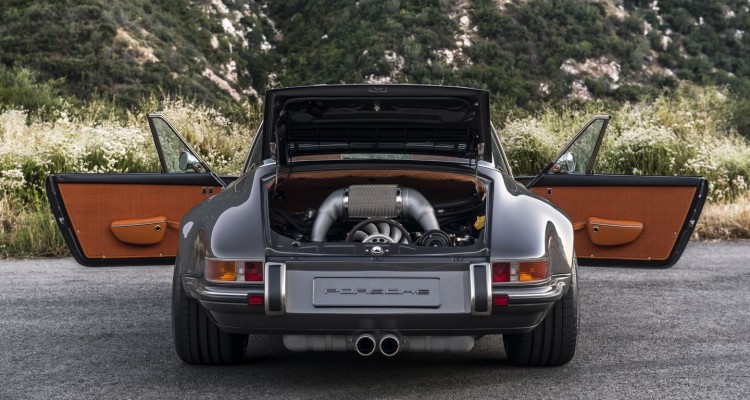Restomod or Restoration; what is the choice of the true enthusiast?
By Omar C.
Within the realm of Car culture, one group that always stands out is the Classic Car community, they are passionate and dedicated to their vehicles, keeping them in showroom condition, restoring them to pristine factory status, or daily driving their immaculate automobiles with a toolbox in the trunk and a smile in the face.
Classic Car ownership can be a virtuous and a vicious cycle, both sides of the experience intertwined by the temperamental nature of a vintage car. Parts breaking, engines constantly overheating, having to track down a spare part across the whole country, those are just few of the delightful hardships Classic Car owners must endure.
But, lurking in the shadow of Concours d’Elégance tier cars; there is a subculture that warps the seemingly dichotomized experience of classic car ownership, giving all of the apparent benefits, without any of the knuckle scraping, oil smudging drawbacks.
This movement is known as Restomod, a portmanteau of Restoration and Modernization, and it has taken the car world by storm. A prime example of this school of thought is Singer, the company that specializes in building customized Porsches catering to any and every possible whim of their wealthy clientele.
But Restomod culture and ideology is not only reserved for the most affluent among us car enthusiasts, it is actually the most affordable way to own a classic car. Take any Chevrolet Muscle car, such as a first generation Camaro, instead of tracking down all original body panels and other OEM parts, why not go the Restomodding route and swap in an LS engine? It’s not limited to domestics either; any vintage British roadster can be converted to electronic fuel injection with the help of aftermarket solutions.
Restomod consists of keeping the car appearing as close to the original as possible, while improving functionality, safety, performance and fuel economy. It would appear as if it merges the best of both worlds, keeping the classic look of the car, while also giving it much needed reliability.
So far it seems Restomod is the holy grail of classic car ownership, but like all utopias, it has a fundamental flaw that resides within its nature. For many Retro and Classic car enthusiasts, it’s not just how the vintage cars look that matters, it’s how they function, the engineering behind them. Take for example a third generation FD3S Mazda Rx-7; you could swap the 13B Rotary for a much more reliable LS V8, but in doing so you would be depriving the Rx-7 of its essence, the very engine it was built around of.
This Restomodding process could be then perceived as turning a classic automobile into a fashion accessory, or a statement of good taste on four wheels, new internal organs bearing the shell of what once was an automotive piece of history.
A full on Restoration keeps the car as close to stock as possible, even going so far as machining identical replacement parts for unattainable components, with utmost dedication to keeping the car in showroom condition. No compromises are accepted.
But it seems as if something has been forgotten, something that is often overlooked in classic car culture: The daily driven classic. While it was briefly mentioned at the start of this article, the unpleasant truth is that a large number of classic car owners never drive their own cars, too afraid to break something, or fearful of damaging the immaculate original coat of paint.
Does refusing to drive a classic go against the ethos of being a car enthusiast?
It all depends on the rarity and the spirit of the vehicle itself. A 1950’s Volkswagen Beetle won’t be driven the same way as a 1971 Dodge Challenger R/T 440 Six-pack, although both are classics, they are different in attainability, availability of spare parts, aftermarket support, and resale market value, should the owner decide to cash in on their property.
Similarly, who the classic car owner is, certainly determines what the car will become, for many it means restoring it to its untainted showroom condition, and have it displayed at home, much like a museum would. For others it’s a chance to build their own exclusive an exquisite modernized classic, or better yet, purchase a readymade one, such as the Singer 911 or the Eagle Speedster V12 Jaguar.
For some at least, Restomod is neither a way to create fashion accessories, nor a sacrilegious corruption of the classic car’s spirit. It is a chance to relive the past while driving towards the future, an undiluted experience, not constrained by the obnoxious norms of Concours. Restomod is only a way to keep their classics where they belong; on the open road, with a smiling face behind the wheel.

